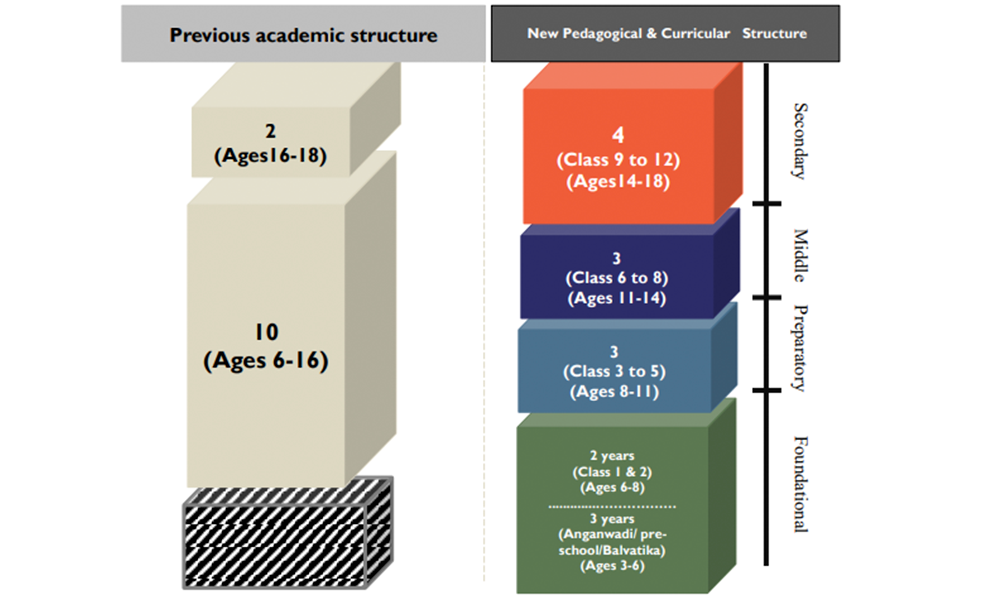-
Early Childhood Care and Education (EECE)
The new policy will modify the 10+2 structure to 5+3+3+4.
Why EECE is important?
By the age of 6, 85% of the brain has developed in children. Special care is required during this period. Proper stimulation and aid in learning will help children develop cognitive skills that will prepare them for their school life.
Crores of children from a socio-economically weaker background do not have access to care and education during their early childhood. EECE will ensure weaker sections of our society have access as well.
What are its aims?
To ensure universal access to EECE across the country. It will prioritize socio-economically disadvantaged areas.
The policy envisages delivering EECE through:
1. Stand-alone Aganwadis
2. Anganwadis co-located with primary schools
3. Pre-primary schools
4. Stand-alone pre-schools
All the institutions will employ teachers/workers trained in the curriculum and pedagogy of the EECE.
What are the pillars of EECE?
These are the pillars of early childhood care:
Flexibility
Multi-faceted
Multi-level
Play-based
Activities
Inquiry
What learning will comprise?
Alphabets
Languages
Numbers
Counting
Colors
Shapes
Indoor and outdoor games
Drawing and painting
Logical thinking, puzzles, and problem-solving
Visual art, craft, puppetry, and music
Behavioral skills
How will EECE be governed?
The NCERT will develop a National Curricular and Pedagogical Framework (NCPF). It will include the best national and international practices. Our local art, stories, poetry, games, and songs will be placed in the curriculum as well.
It will be developed in two parts (sub-frameworks):
1. For 0-3 Year-olds
2. For 3-8 Year-olds
Will it have new infrastructure?
Yes. The Anganwadi centers will be equipped with high-quality infrastructure. It includes:
a. Play equipment
b. Purpose-designed classrooms
c. Surrounding that induces learning
How will teachers be trained for EECE?
Initially, current Anganwadi teachers/workers will be trained in line the framework developed by the NCERT. Anganwadi workers with 10+2 or above qualifications will be trained through a 6-month certificate program and those with the qualification below it will undergo a one-year diploma program.
In due course, state governments will train educators. These teachers will be trained to deal with specific stages in growth and learning.




